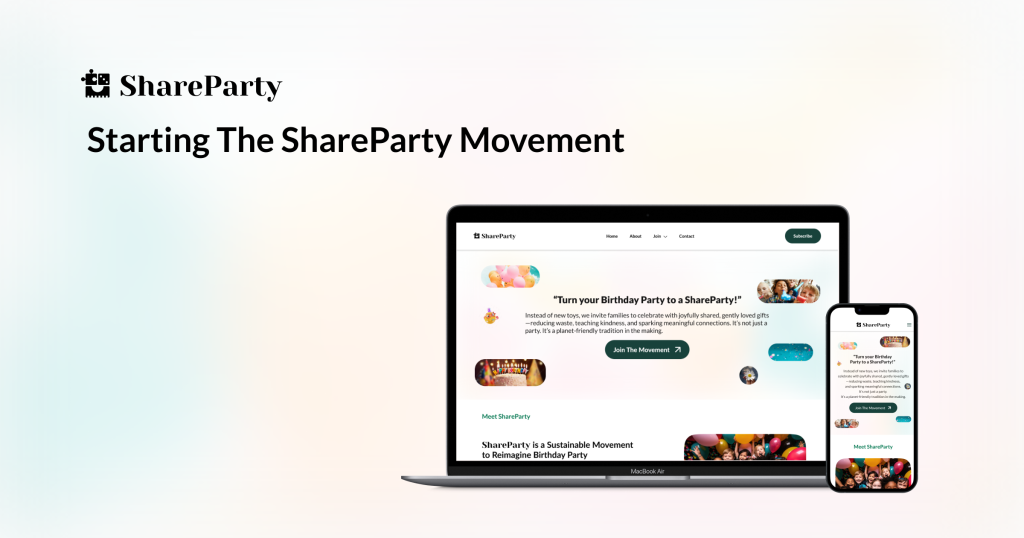Timeline: 3 months (Spring 2025)
Tools: Figma, FigJam, Squarespace, Google Workspace, Qualtrics
What is ShareParty?
ShareParty is a non-profit initiative aimed at inspiring families to regift and exchange toys, games & books, rather than purchase new ones. Their goal is to cultivate strong community bonds and promote environmental consciousness while ensuring our children have access to an array of items that ignite their creativity.
Mobilizing People With A Website
Our goal is to make that goal more achievable by creating a website that will mobilize individuals and organizations to host or participate in toy swaps and regifting opportunities and to promote ShareParty as a larger movement towards a more environmentally conscious world. Because ShareParty is a new initiative, there is still a lot of development in terms of content and opportunities to join the movement. As designers, we had to translate those new strategies into an interface that would fit the organization values, be empowering to communities, and be easily navigable for people discovering ShareParty for the first time.
Important Guidelines
To accomplish our goal, we had to keep a lot of things in mind:
Design Questions
- How might we better enable individuals and third-party hosts to independently run successful ShareParty events through the website?
- How might we provide the information, tools, and inspiration individuals and organizations need to feel confident participating in the ShareParty movement?
- How might we design a website to communicate ShareParty’s core values—sustainability, community, and joy— while maintaining clarity and trust?
- How might we make the distinction between Birthday ShareParties and Community SwapParties clear?
Key Performance Indicators (KPIs) to help determine what success looks like for our team:
- Increased signs up on mailing list.
- Increased downloads of ShareParty tools.
- Increased partnerships and collaborations with other small businesses and public institutions.
- More website visits.
Research
In the beginning, we put our focus on ShareParty’s current collaborations with organizations, making the core of our research was to understand what would motivate families to participate in future ShareParty events and how we could make hosting easier for organizations. To do this, we conducted interviews with several of ShareParty’s previous collaborators and found that organizations were struggling with the discoverability of ShareParty events.

Survey Results
We surveyed 20+ parents to find out their initial thoughts on regifting and their current mental model in this area. Here is some of the survey data:

Insights
We realized that while many people like the idea of attending a ShareParty, many people are also reluctant to host their own ShareParty event. But this hesitancy is more than likely exacerbated by a lack of knowledge of how to host one and what exactly a birthday ShareParty is, which led us to our third key insight: the distinction between birthday share parties and community toy swap parties (also called share parties) is not strong enough. We also found that both parents and organizations often found the idea of “hosting” an event to be overwhelming, so we wanted to make hosting a lower barrier by providing resources made by our client in accessible spaces on the website.
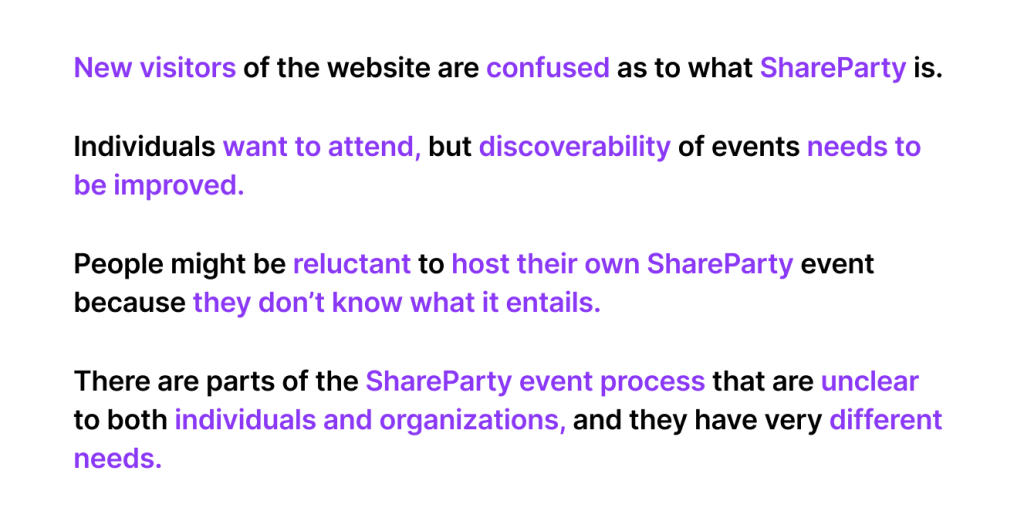
Direction Pivot
During this process, our client mentioned that she wanted to introduce a new event idea that would shift the focus of ShareParty to a more decentralized and individual-focused approach, Birthday ShareParties.
A Birthday ShareParty is a movement that encourages families to request pre-owned toys as birthday gifts. With this new idea, it takes the pressure off of our client and mobilizes micro-communities.
After discussing our insights with our client, we decided to refocus our strategies to emphasize Birthday Share Parties over ShareParty’s current toy swap events because we realized that the goal of ShareParty spreading as a movement and overcoming the stigma of regifting would be better accomplished through mobilizing individuals in smaller micro-communities.
While organizations could help promote a environmentally conscious world by giving used toys a new life, we recognized that to stop the flow of new toys from entering the plastic cycle, we had to target individuals and one of the main reasons they were buying new toys– birthday party gifts.
Strategies
After gaining a better understanding of the direction of the project and synthesizing our insights, we made a plan to act on these strategies:

Design
While we had to redesign the whole website, our priorities were the Birthday ShareParty and the Community SwapParty page. One of the most important tasks is to ensure that people understand what a ShareParty is and what it means to host a ShareParty.
With the help of our client, we were able to establish a new information architecture through card sorting. Our new architecture makes the mission of ShareParty clear and lends equity to both birthday shareparties and community swap parties as opportunities to join the movement.
Try our prototype with this link.
Current Information Architecture

Redesigned Information Architecture
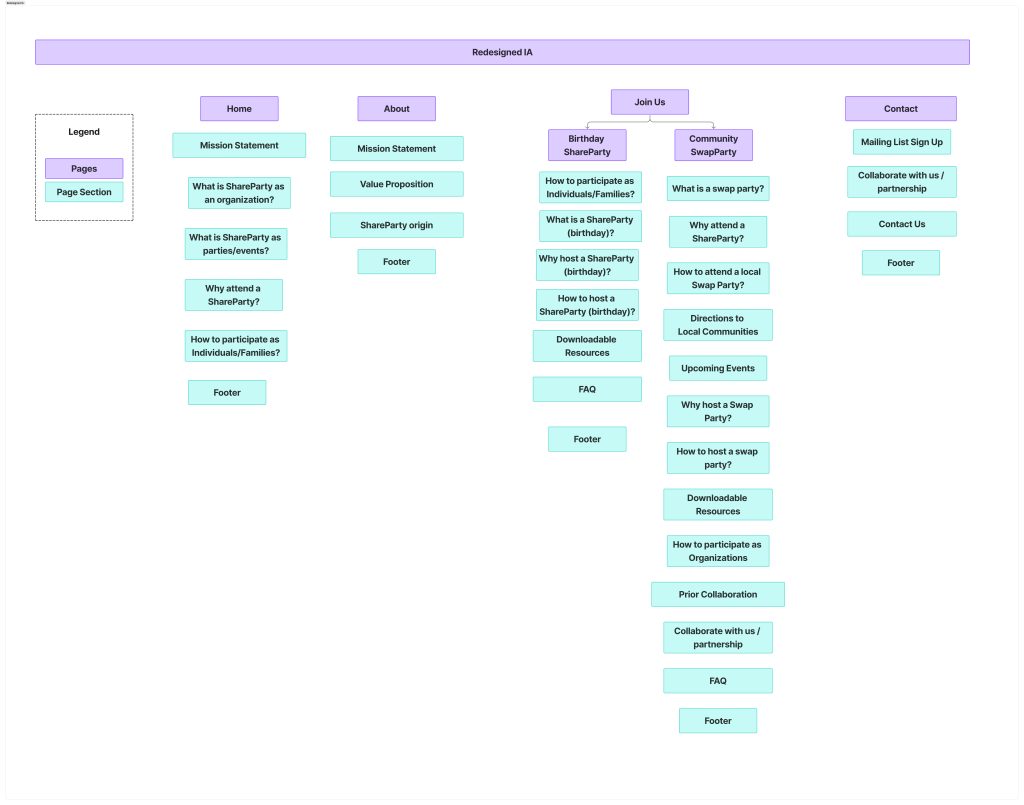
Color Palette
We wanted to utilize a brighter, more cheerful color palette that would match ShareParty’s branding as a website catered to families with young children and mission to bring fun and sustainability to children’s birthday parties and toy swaps.
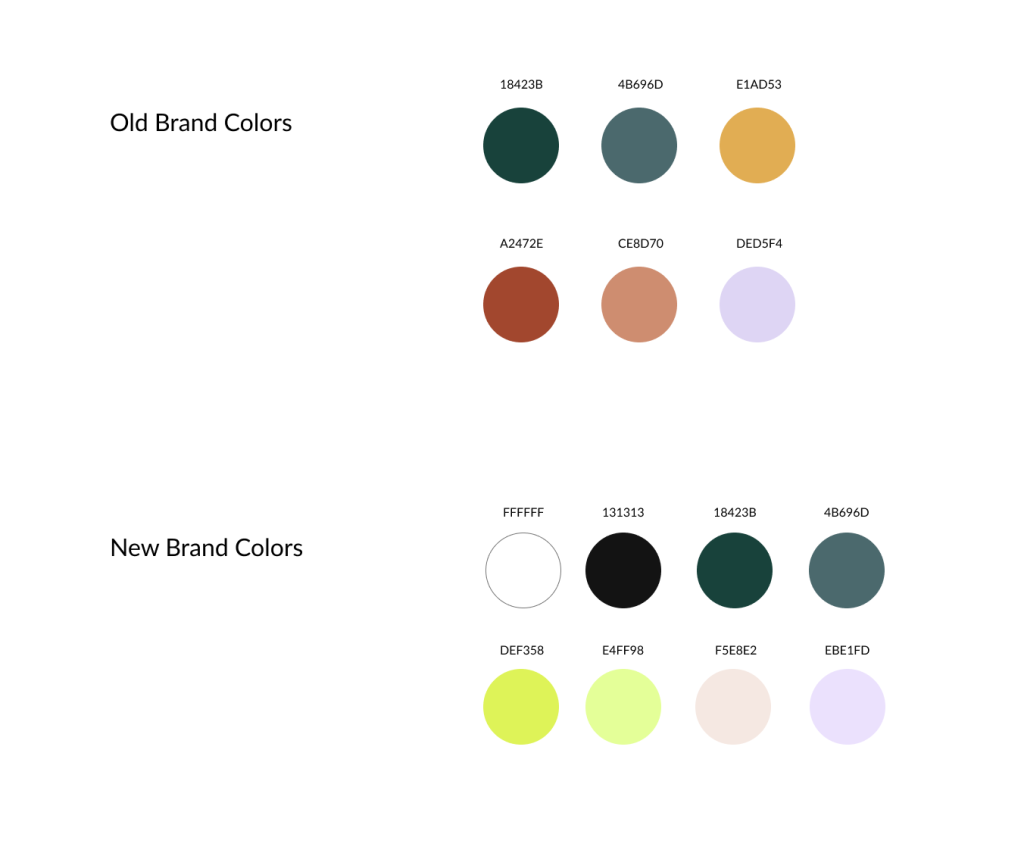
Improved Resources
We included more guidance and support for organizations and individuals who are interested in throwing their own shareparties and swap parties. To make these tools easier to access, we took ShareParty’s step by step guide and put it directly on the website. We added previews of the downloadable Canva resources for users to see what they are opening and an FAQ section.
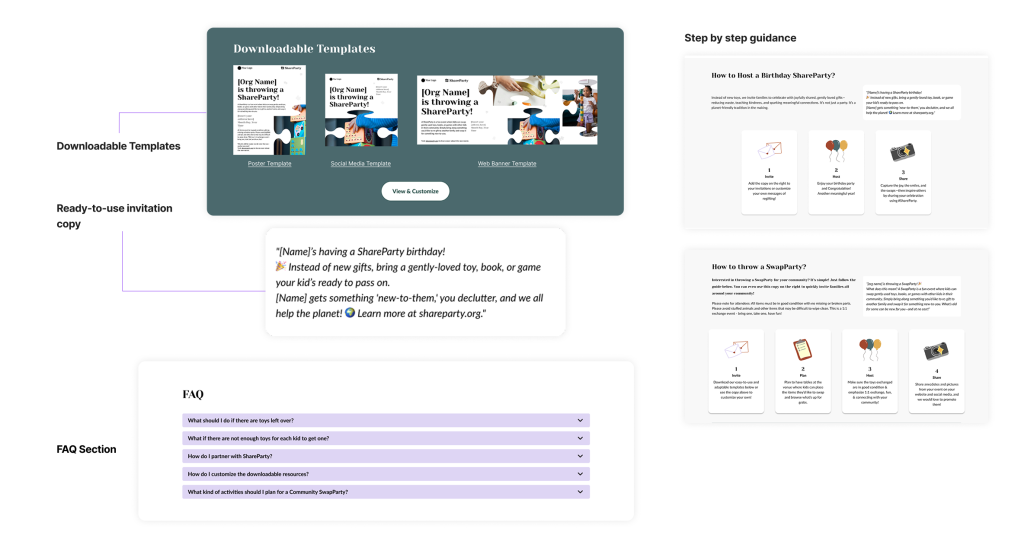
Increased Shareability
Since we found that organizations were struggling with discoverability and to align with ShareParty’s goal to take off as a movement, we added more emphasis for users to share their involvement and participation on social media. We also created a QR code for people to easily share the website with their friends or parent groups. ShareParty hosts can also add this QR to promotional material or around their event to help attendees understand why they should participate in more ShareParties.
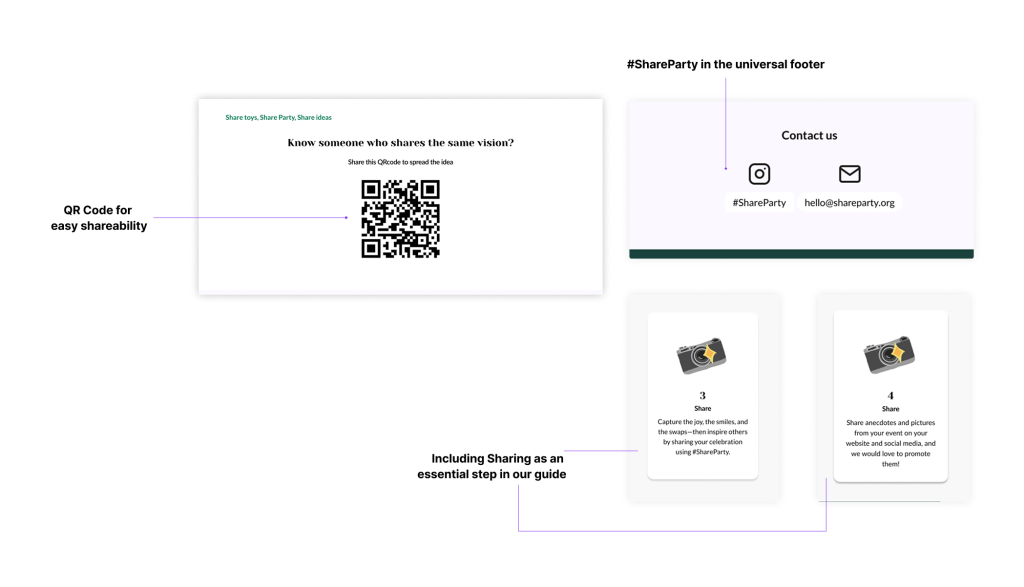
Distinction between Birthday ShareParty and Community SwapParty
Making the distinction is crucial for new users to understand what it is that ShareParty can provide and what their goal is.
To do that, we brainstormed different names for each event, designed two different pages, and created differentiating copy. We chose to separate the two different events so it’d be easier for new participants to make that distinction and plus, they were two different event models.
Within each page, we explain what it is, steps on how to organize one, and important relevant information for each. Because we want to focus on the individual aspect, we’re able to put more emphasis on it throughout the webpage with them separated.
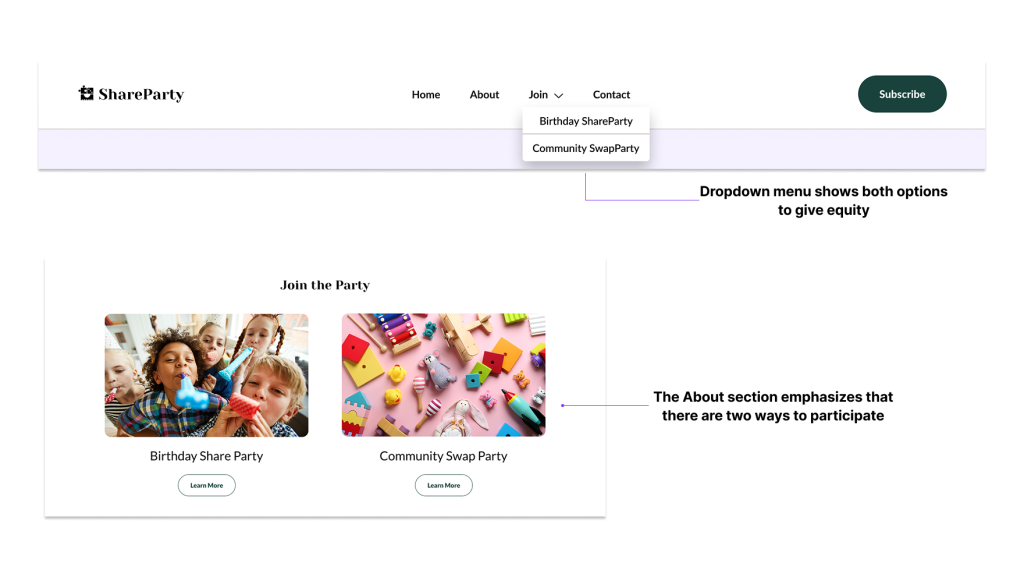
The New & Improved ShareParty
Within our homepage, we were able to provide new sections that briefly explains ShareParty’s value preposition while also guiding them towards a way to participate.
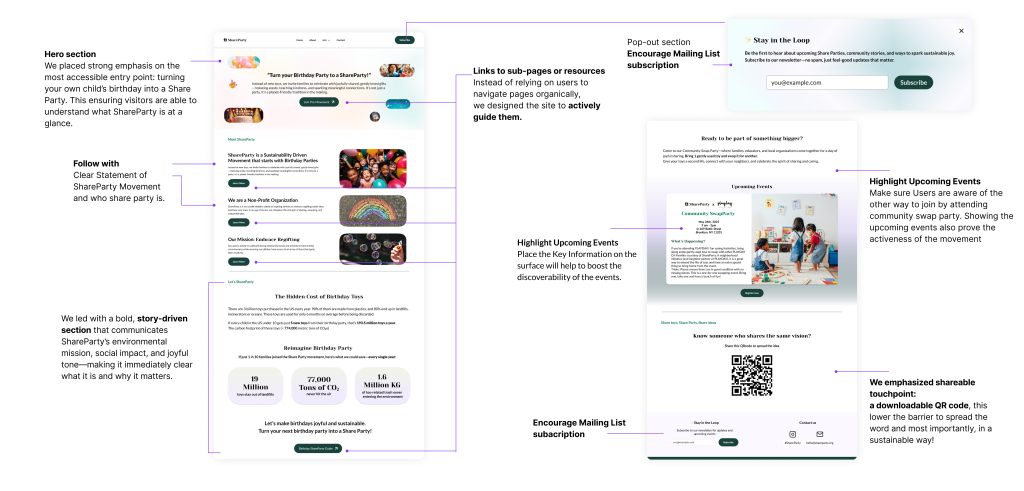
We kept our About page brief yet informative about what ShareParty is. To ensure that the page wouldn’t be too dense, we ensured that all of the sections were succinct and clear.
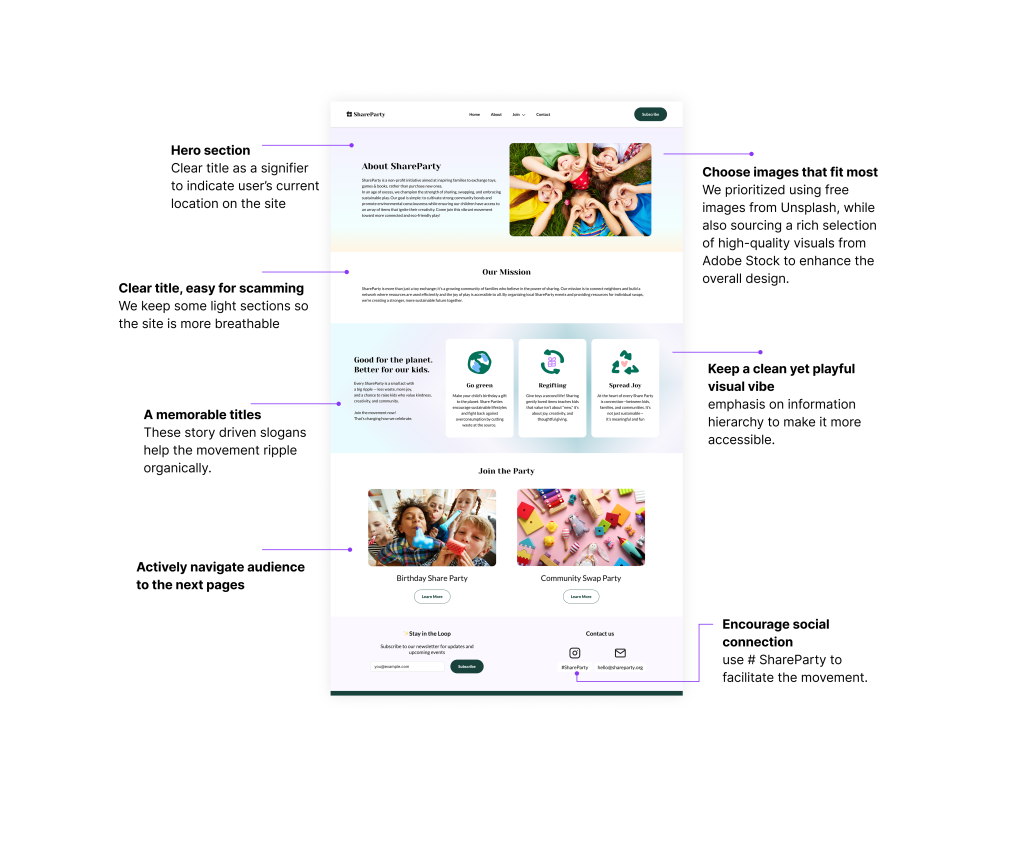
Our two most important pages are the Birthday ShareParty page and the Community SwapParty page. Within these pages, we provide differentiating copy that allows visitors to understand the two different events.
Each event page has relevant sections that informs visitors on how to participate in the ShareParty movement. If visitors had any questions, we provide an FAQ section that could provide clarity.
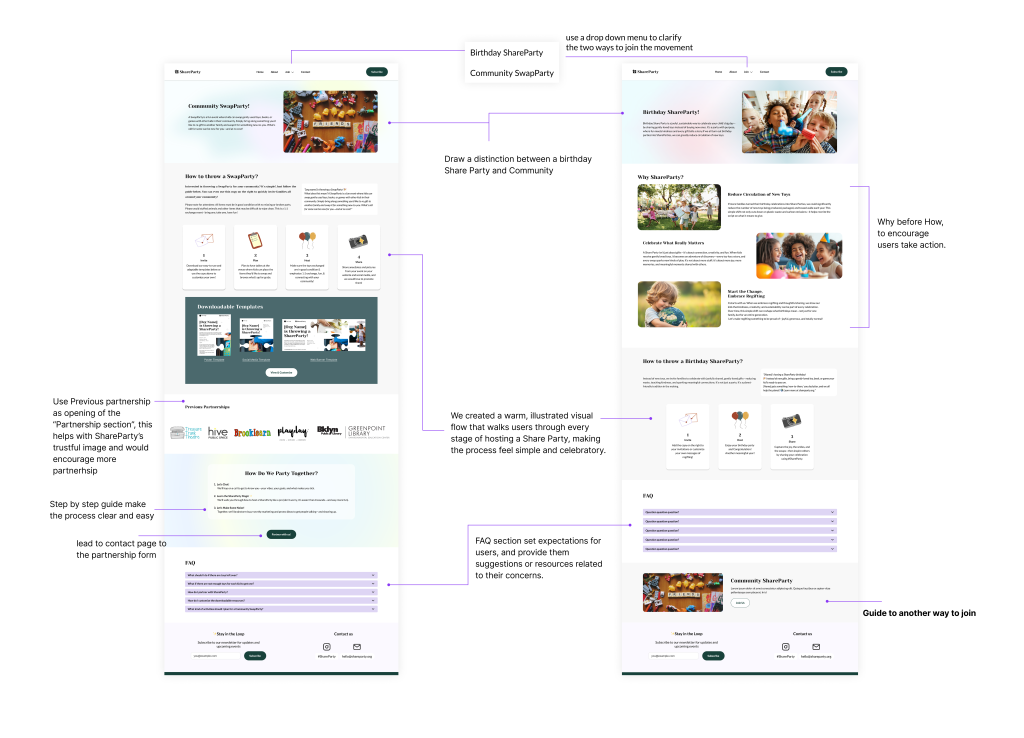
Although the focus is on Birthday ShareParties, partnering with organizations is still something our client wants to ensure is possible. Our contact page has a form that allows for input of information that our client would need to partner with them.
We also make the contact e-mail easy to find to ensure that visitors can easily reach out whenever needed.
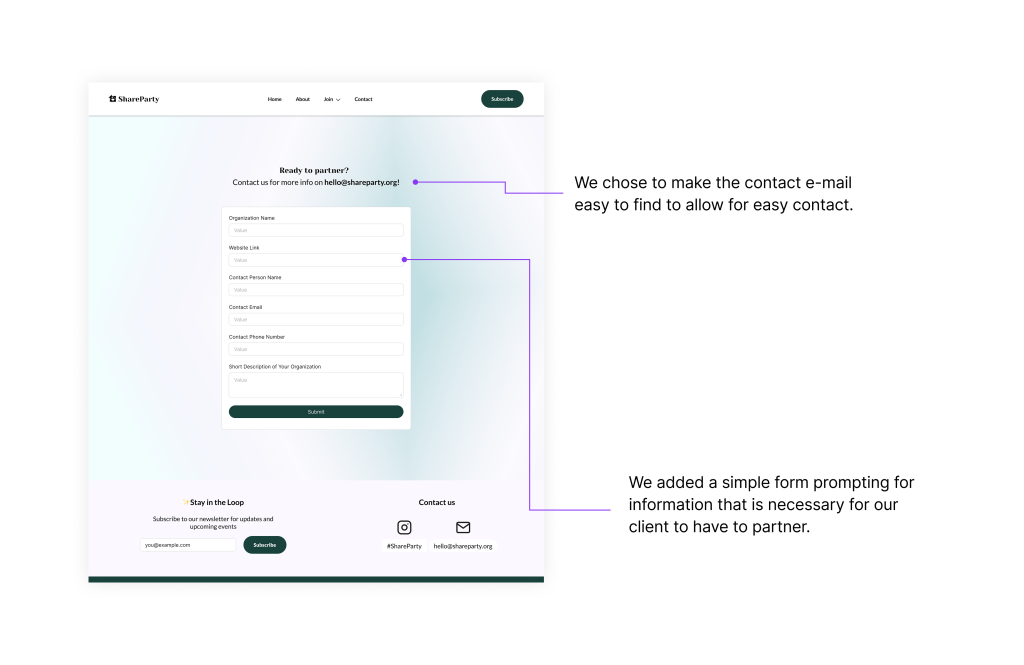
Conclusion
This collaboration was an amazing opportunity for us to learn about what it means to bring a new product to life. Because ShareParty’s mission is so much about sustainability, we’re glad to be able to make an impact on an organization that can make the world better.
As the semester came to an end, we thought about what we can act on if we had more time:
- Build/develop the final design on a website builder.
- Conduct usability tests to ensure that our design is free of usability issues.
- Finalize copy that is in-line with the voice/language of the client.
- Create fully-fledged design system.
Our client also shared a quick testimonial about her experience working with us: “Working with Grace, Ariel and Matthew was an absolute pleasure. They brought fresh eyes, thoughtful research, and user-centered thinking to the redesign of the ShareParty website. From reimagining our information architecture to enhancing the UI and UX, they delivered a polished and intuitive experience that reflects our mission. Their professionalism, creativity, and collaborative spirit made the process both productive and enjoyable. I couldn’t be more pleased with the outcome. Thank you, Grace, Ariel and Matthew for your excellent work!”
We want to give thanks to Rachel and Shama for giving us this opportunity to learn.
